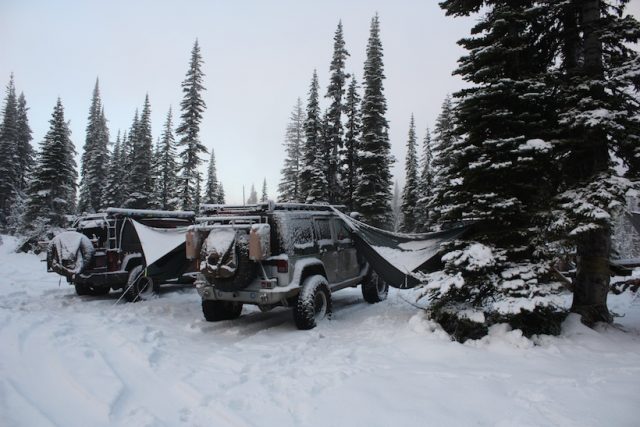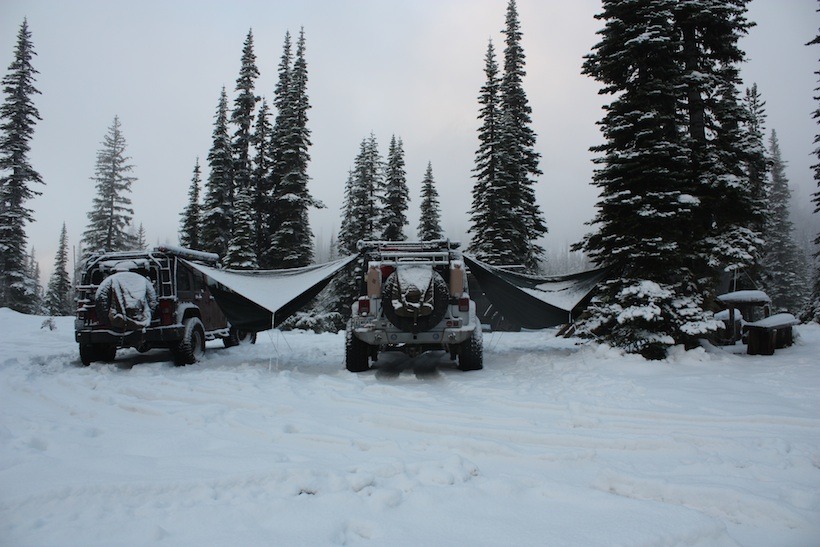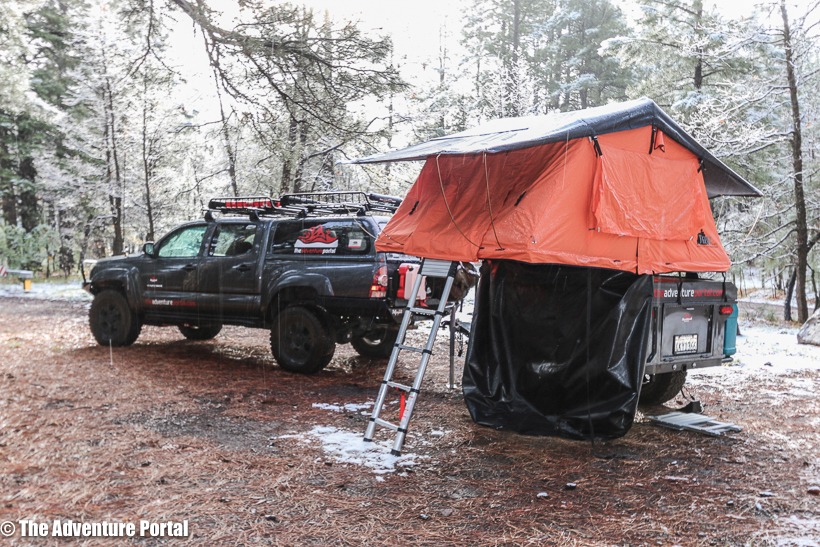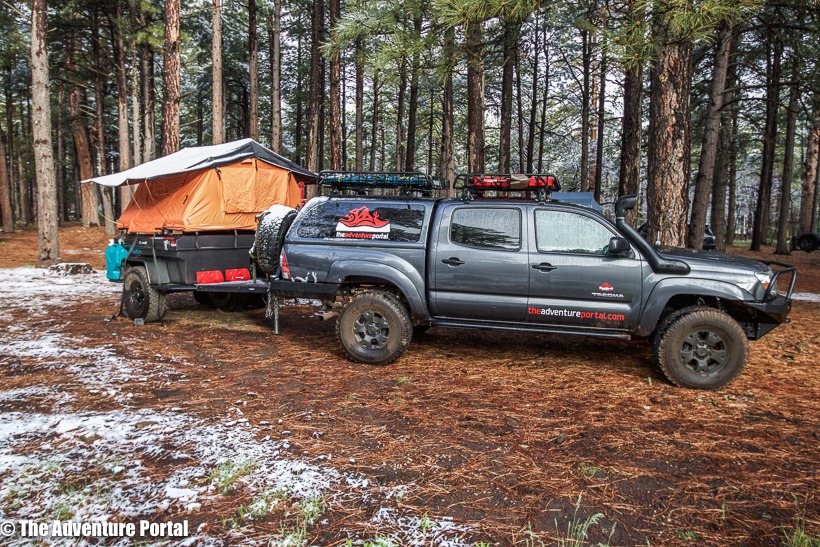At this time of year, thoughts often turn to escaping to sunny, sandy beaches. Some folks, however, enjoy romping in the snow. They brave the elements, and camp out in the wild. One benefit is that you can have the park or wildlife area practically to yourself.
Just as you need to account for the extreme heat of summer, so should you plan for the challenges of camping in snow and cold.
Here are a few tips on how to prepare for camping in the snow and cold.
Start by checking the forecast and if a bad storm is predicted, stay home. As in any type of weather, never camp alone, and always tell someone where you’re going and when you’ll be back.
In terms of gear and clothing, prepare for the worst so you’re not taken by surprise. The most important factor is to stay warm and dry. Frostbite and hypothermia aren’t just annoyances. They can be killers.
- Clothing that incorporates Gore-Tex (or similar fabric) is very useful. You need to wick out as much sweat as possible. Damp clothing can chill you quickly, and bring on hypothermia.
- Outer coats should have a nylon shell to break the wind. Thinsulate is a great insulating material for coats and gloves.
- Layer your clothing during the day. Make sure there’s some give, though. If you feel constricted, the fabric will be packed so tightly that it’ll lose some insulating ability.
- Having extra clothing also ensures that you can change into dry stuff at the end of the day. Look for sturdy boots. Sorel is a good brand, but there are others. You’ll want rubber soles with good traction. Leather uppers are nice, but treat with a sealant.
- Never sleep in clothes you’ve been working or playing in. They will be damp with perspiration, which means you’ll be uncomfortable all night. Set aside dry clothing for sleeping. That includes socks, heavy pajamas (or sweat shirt and sweat pants) and a warm hat.
I recommend a 4-season tent. The walls on these are solid material to block wind and shed snow. I prefer those with a full fly over the tent as well. They make for a better desert tent too. The fly creates shade and the combination of 2 walls keeps blowing sand out. Look for a model that has a vestibule. That’s where you’ll store your outerwear and boots. A vestibule, provides a transition area to reduce the snow you track into the main tent. It provides more room for sleeping, and your bedding and dry clothing won’t get wet. Prior to setting up, pack down the snow for a firm base. Create a berm around the sides for wind break, and remember to face the front door away from the wind.
A good sleeping bag is a must. If you can’t find one rated to the proper temperature, take along two. You can stuff one inside the other. Understand that manufacturers take liberty with the temperature ratings on their products. Assume your boots, sleeping bag, and clothing won’t really keep you comfortable at the manufactures rated temperature. That’s why you pack heavy clothing, and even feet and hand warmers.
Use a foam mattress or blankets as insulation under your sleeping bag. Thermarest mattresses work but the $20 / $30 6 inch type air mattresses don’t provide much insulation, because the air inside circulates too much. Dead air space is a great insulator but it has to be dead (i.e. not circulate).
Tent heaters are nice, however be careful. Today’s models are small and easy to use. The Little Buddy by Mr Heater, for example, uses the standard 1 lb. propane cylinder. The manufacturer claims it can heat up to 100 square feet. Note: some heaters have altitude restrictions (do not function over a certain altitude). Also, don’t leave the heater running all night. Even though it has an oxygen sensor and a very sensitive tip-over switch, I wouldn’t want to take the risk of fire or carbon dioxide poisoning. Run the heater before you snuggle into your tent, then again when you wake up.
If you are on a hunting trip, store guns and outerwear outside but away from snow (in the vestibule or your vehicle). A gun warming up will generate condensation if brought inside. Any snow on your outer clothing won’t melt if left in the cold, so you’re not likely to get damp (at least from that).
Store all gear including shovels, axes etc. in your vehicle. They could get buried in the snow.
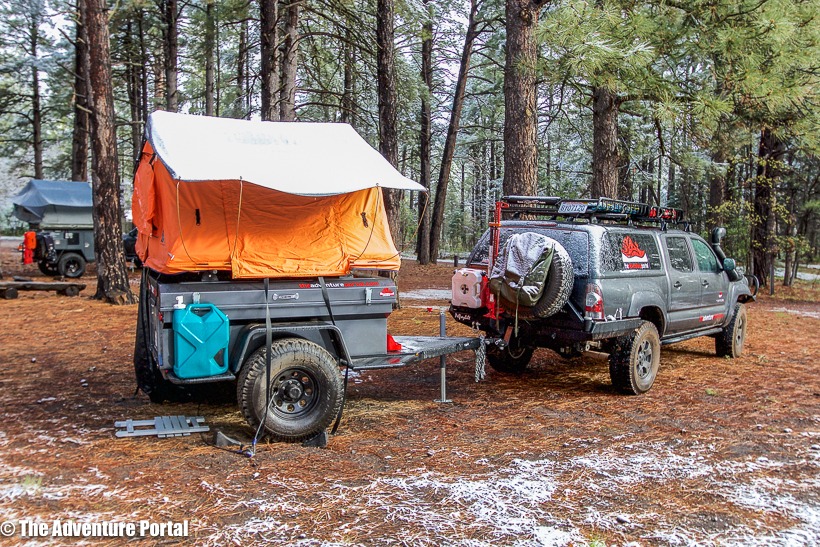
Cooking, as you can imagine, presents its own challenges.
- To prevent (or minimize) freezing, keep fresh food in a cooler. You may want to stash the cooler in your vehicle overnight.
- Use wooden or plastic utensils as much as possible. Metal objects get blasted cold in the winter.
- Propane is fine for most winter applications, but it is sluggish in severe cold. If you anticipate those temps, pack a stove that runs on white gas.
Vehicle health and safety
- This is a good time to recheck the vitals. Inspect your tires. Rotate and replace as needed. Test the battery and windshield wipers; replace if necessary.
- Check your antifreeze: Is it still at full strength? Are you low on windshield washer fluid?
- Make sure you have a survival kit and tire chains (if applicable).
- Pack a snow shovel and ice pick.
- Orange spray paint comes in handy for marking the snow in the event of an emergency.
- Remember to include a fire-starter kit. Fill a baggie with matches and cotton balls coated with Vaseline.
Communication
- Keep your cell phone charged up.
- Before you leave, identify the frequencies of the ham radio repeaters in the area you are visiting.
- Make a habit of listing to the NOAA weather broadcasts each day.
- If you’ll be in a really remote area, consider a Sat phone, a DeLorme inReach or other “off the grid” communication device.
Mother Nature puts on a grand performance during the winter season. For those hardy enough, camping can be very enjoyable and rewarding. As with any other four wheeling experience, preparation is the key to safe enjoyment.
Author: Tom Severin. Tom Severin is an International 4-Wheel Drive Trainers Association© certified professional 4WD Trainer and a Wilderness First Responder (WFR). He is an instructor for the United Four Wheel Drive Associations (UFWDA) and the California Association of 4WD Clubs. Tom is the owner of Badlands off-Road Adventures. Badlands Off-Road Adventures offers 4WD training and 4WD guided tours specializing in Four Wheel Drive vehicles. The company has trained hundreds of students, including the Orange County (CA) Sheriff’s Department, the Gas Company, the National Park Service, and the US Marine Corps.
Photos: Jeff and Melissa Sikes: Owners-Rugged Overland Outfitters.
IG: ruggedoverland
FB: Rugged Overland Outfitters
TAP







